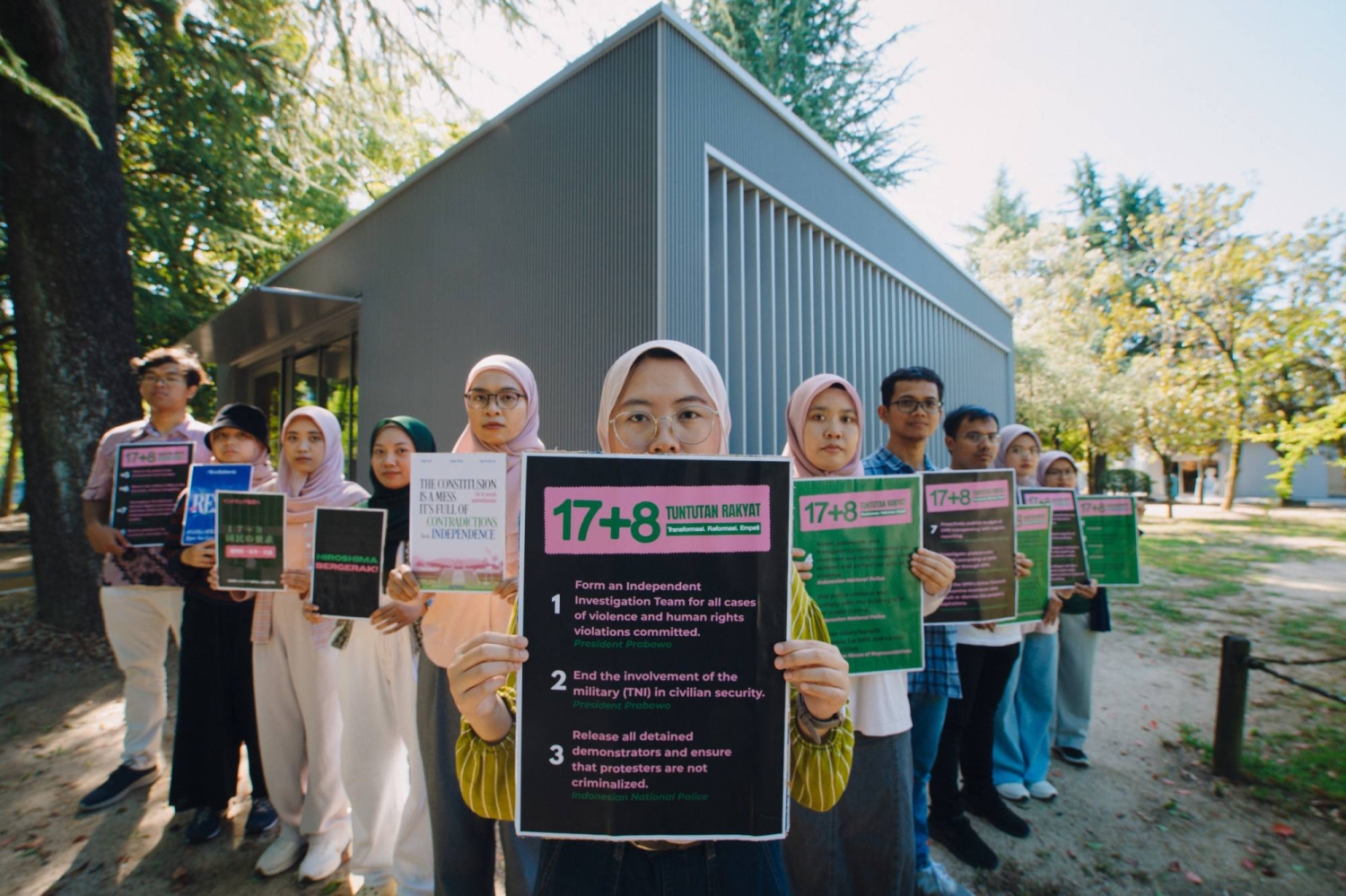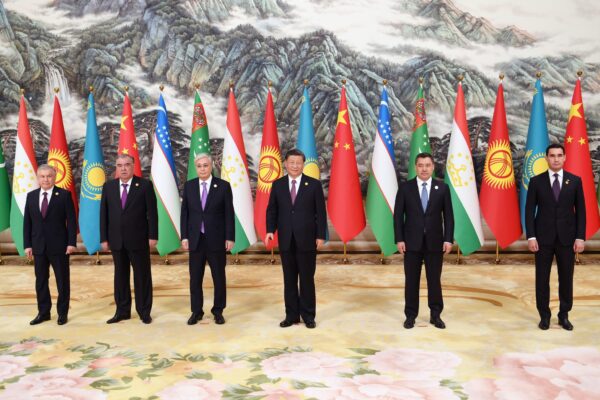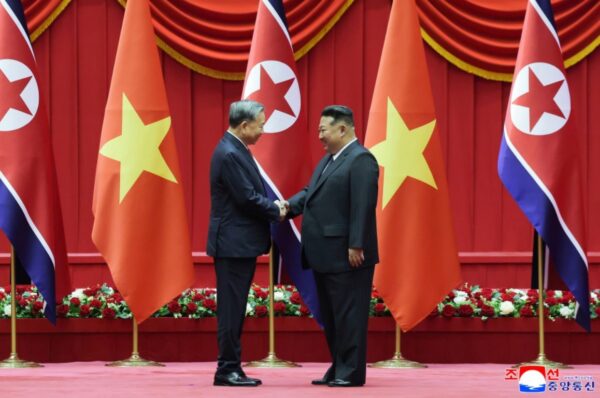PROTECT YOUR DNA WITH QUANTUM TECHNOLOGY
Orgo-Life the new way to the future Advertising by AdpathwayKong Spility Lyngdoh Langrin would have been 100 this year. However, it is not only because of her birth centenary that her death anniversary this year has assumed greater significance than in previous years.
The Indian government’s renewed push for uranium mining in the northeast Indian state of Meghalaya has made Langrin’s anniversary an important rallying point for anti-mining activists.
The matriarch of the Domiasiat locality in Meghalaya, Langrin died on October 28, 2020, aged 95. Since then, her death anniversary is observed in parts of Meghalaya as “anti-uranium mining day.” Langrin became known in Meghalaya as an “iron lady” for rejecting an offer of 15 million rupees per year (around $170,000 per year at current rates) for 30 years to lease her land to a public sector enterprise for uranium mining. She had famously said, “Money can’t buy me freedom.” That was back in 1993.
This year, the Indian government’s September 8 notification exempted atomic minerals, including uranium, from the mandatory public hearings under the Mines and Minerals (Development and Regulation) Act. Since then, Meghalaya’s uranium-rich regions in Domiasiat, Wahkaji and the surrounding areas of the West Khasi Hills have been tense, with local tribal organizations like the National People’s Youth Front (NPYF) and the Hynniewtrep Youth Council (HYC) voicing opposition. The anti-uranium mining protests in the region date back to the early 1990s.
Soon after, Meghalaya Chief Minister Conrad Sangma clarified that his government was opposed to uranium mining. Protests, nevertheless, continued.
On October 23, the Khasi Hills Autonomous District Council passed a resolution formally opposing the government directive. On October 28, the Khasi Students’ Union (KSU), an organization of the Khasi tribe, staged demonstrations. They paid tribute to Langrin and vowed to continue her battle.
At the October 28 event, Langrin’s son, Phrijun, alleged that “some unscrupulous people have been spreading rumors” over the past few months that her children and grandchildren are supporting uranium mining. “I assure you that our stance on uranium mining has not changed,” he said.
Protesters accused the Meghalaya government of displaying double standards. They ask, if the government is against uranium mining, why is it not adopting a resolution in the state assembly?
The renewed push for uranium mining is not an isolated development. A 62-page handbook, titled “Geological Potential Of Northeast India: A Hidden Trove Of Mineral Prospect Beneath Majestic Landscape,” released in June, kick-started a push for mineral extraction in Northeast India. The Geological Survey of India (GSI), which prepared the publication, said it has delineated at least 38 blocks in Arunachal Pradesh, Assam, Meghalaya, and Nagaland that are now ready for exploration.
These sites hold energy resources like coal and hydrocarbons as well as critical and strategic minerals such as graphite, vanadium, cobalt, and rare earth elements that are crucial for the manufacture of batteries, semiconductors, and advanced alloys.
India’s Northeast, which shares borders with China, Myanmar, Bhutan, Nepal, and Bangladesh, has been one of the most socio-politically sensitive regions in India. The region is also prone to landslides, earthquakes, and floods, and is geologically and ecologically fragile. Indigenous people dominate the region’s demography.
In the handbook, Federal Minister G. Kishan Reddy of Prime Minister Narendra Modi’s Bharatiya Janata Party (BJP) described the Northeast as a region emerging “as a frontier of opportunity” that holds “immense potential to contribute to India’s energy security, industrial development, and future technologies.” He said that such geological richness makes the region indispensable to India’s “ambitions in clean energy, digital infrastructure, and advanced manufacturing.”
Also in June, the region hosted the second North East Geology and Mining Ministers’ Conclave, where India’s Mines Secretary V.L. Kantha Rao highlighted that the GSI has identified over 36,000 square kilometers in northeast India as having mineral potential, translating to nearly 3,000 prospective mines. The government said that the push was part of the “strong momentum” that India’s mineral auction framework gained in recent months. The Northeast is expected to play “a central role in India’s critical mineral strategy,” the government said.
Along with promises of prosperity, the reported mineral potential of the Northeast has triggered worries. Recently, India’s Supreme Court raised concerns over rapid and unchecked heavy infrastructural development in the Indian Himalayas amid climate change-induced extreme weather events. Of the eight northeastern states, Arunachal Pradesh and Sikkim lie in the Himalayan region, while Meghalaya, Nagaland, Manipur, Mizoram, Tripura and Assam sit in the sub-Himalayan region. Both regions are known to be geologically fragile.
The government’s hydropower push in the Northeast over the past two decades has met with repeated protests and resistance movements. The government has eased regulations for the clearing of forest tracts for major infrastructure projects, which include mining explorations. Recent reports showed India’s Northeast is losing forest cover rapidly.
The Northeast is home to the Indo-Burma and the Himalaya biodiversity hotspots. It contains more than one-third of India’s total biodiversity, and is home to 16 National Parks, 52 Wildlife Sanctuaries and 194 Community Reserves, including seven Tiger Reserves, 10 Elephant Reserves, four Biosphere Reserve and three Ramsar Sites (wetlands of global importance).
According to government reports, almost the entire northeastern region “is susceptible to landslides except the plain areas of Assam, Manipur and Tripura.” Northeast Himalayas, including the Darjeeling hills in northern West Bengal, have 42.85 percent of India’s total landslide-prone area (excluding snow cover) — 0.18 million sq km of the national aggregate of 0.42 million sq km.
While heavy rain is one of the most common triggers for landslides, a 2024 report spoke of “alarmingly increasing flood vulnerability and disaster risk” in the region. Since the northeastern states lie close to the eastern Himalayan belt, where the Indian plate is being subducted beneath the Eurasian plate, the collision and subduction of these plates generate immense strain, which is periodically released through seismic events.
Considering all these aspects and the history of protests against heavy infrastructural projects in this region, it can safely be assumed that the mining push would trigger more conflicts should the government ignore or downplay local sentiments.


 1 day ago
1
1 day ago
1






















 English (US) ·
English (US) ·  French (CA) ·
French (CA) ·  French (FR) ·
French (FR) ·